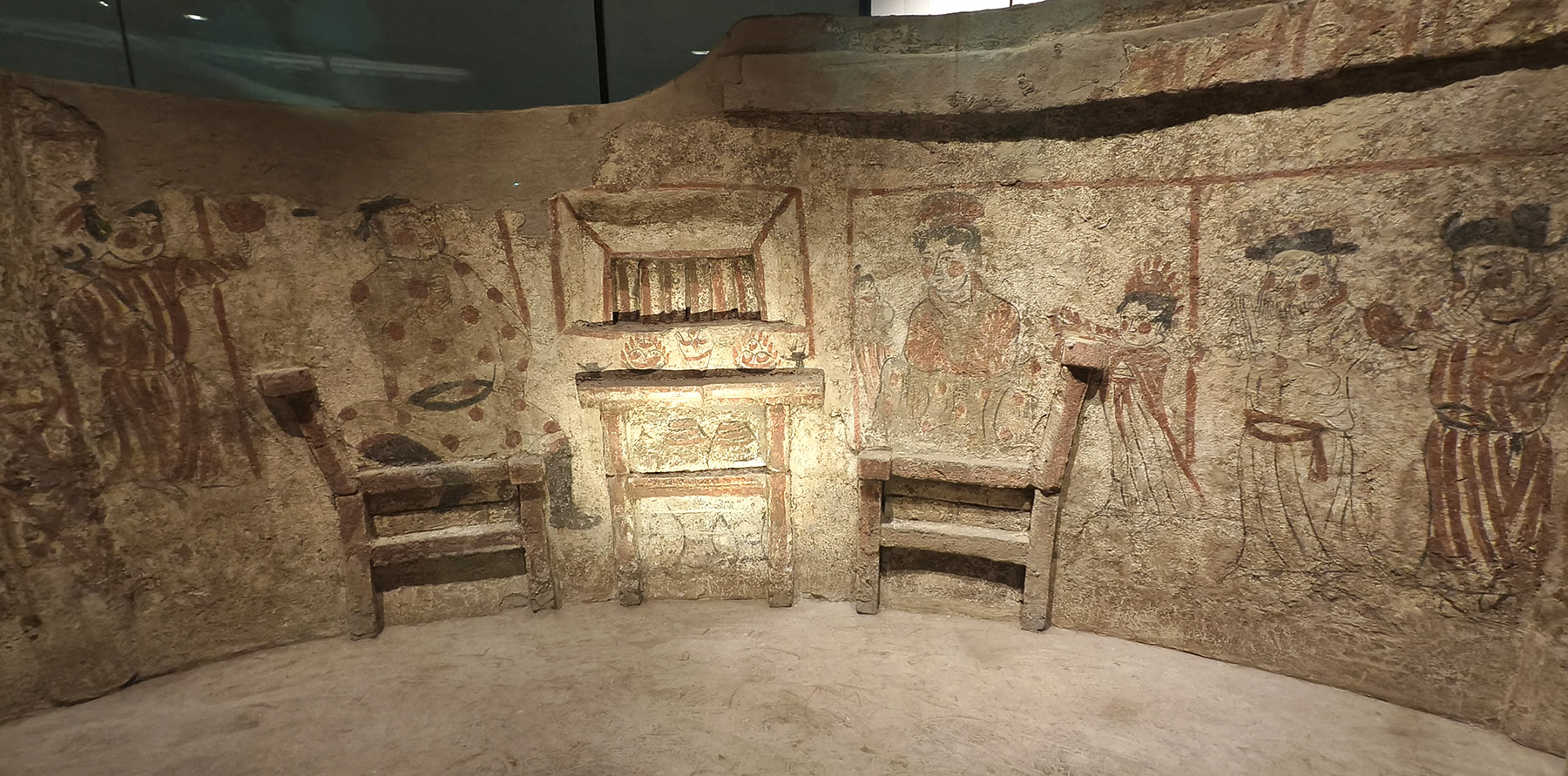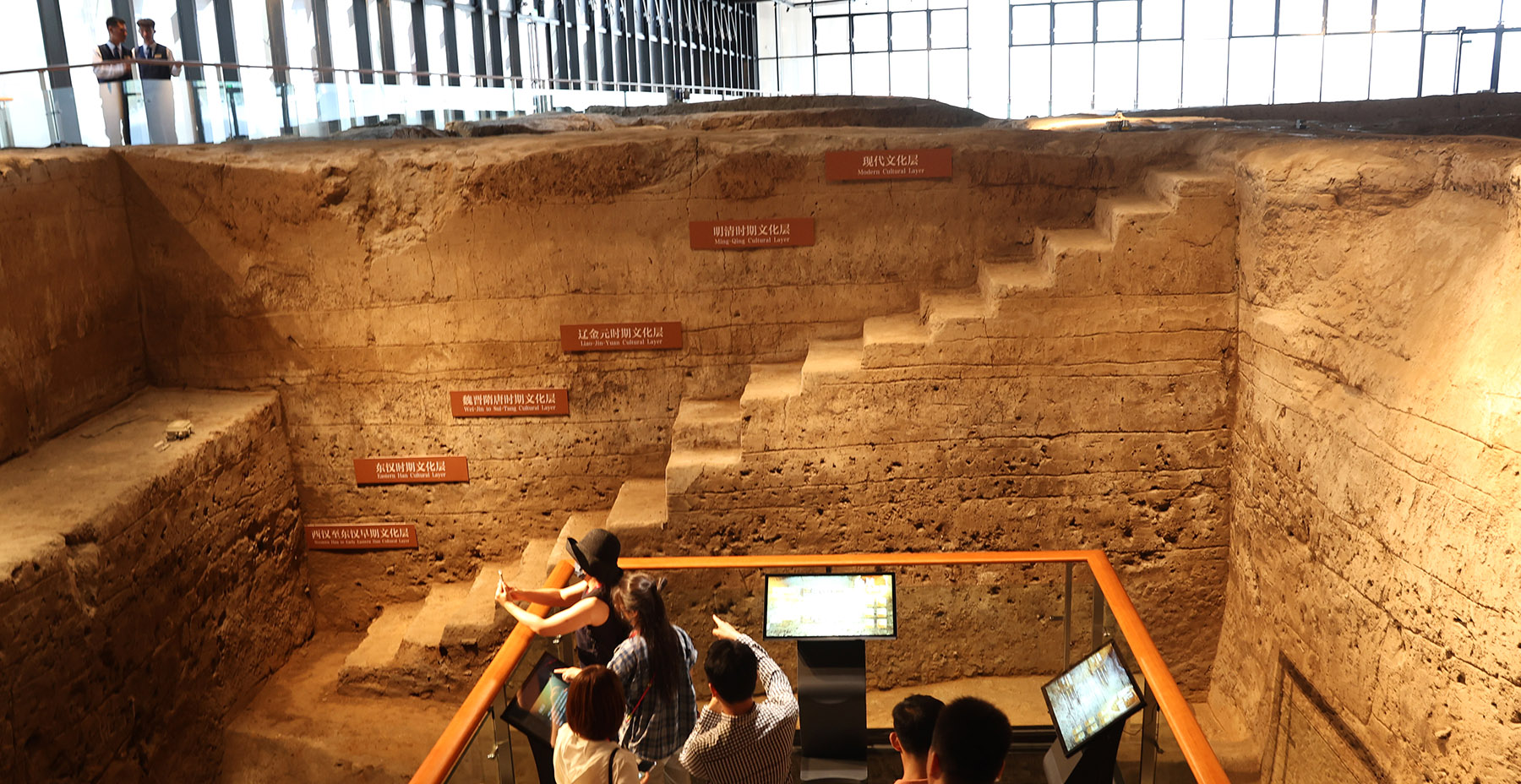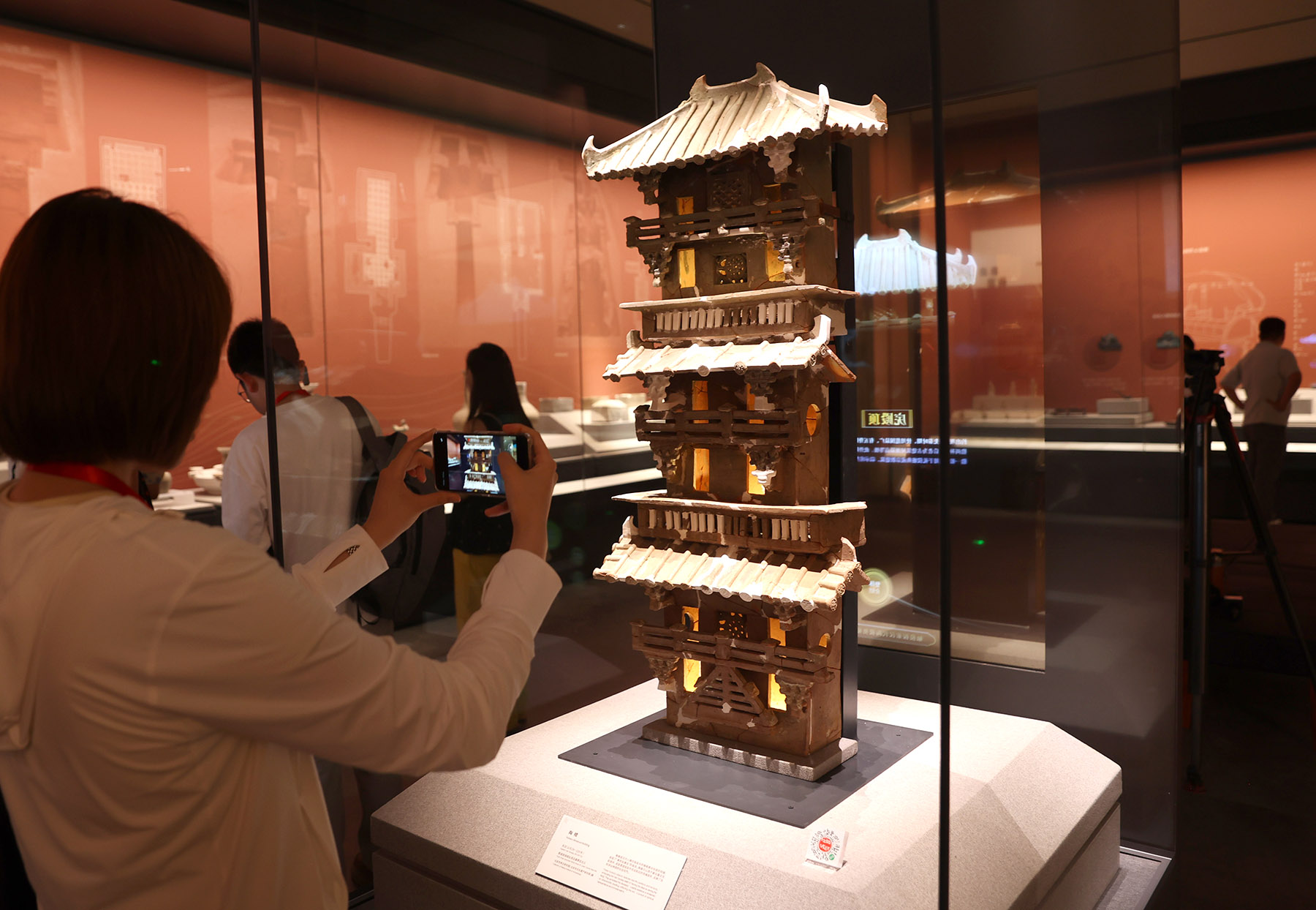Museum in Beijing offers a tantalizing glimpse into the past, Cheng Yuezhu reports.

The newly opened museum of the Luxian county heritage site invites visitors to step into the past. It features an original excavation area that immerses people in the field work of archaeologists, while two ancient tombs, relocated and intact, allow a close view of the chambers.
One of the tombs dating back to the Jin Dynasty (1115-1234) even allows visitors to enter the chamber itself through a glass walkway and view its interior up close, without potentially damaging the cultural relics. Its walls are adorned with murals vividly portraying scenes from everyday life in ancient times.
With drawings and relief sculptures, a section of the mural depicts a couple, believed to be buried in the tomb, seated face to face at a wooden table, with fruits and wine vessels placed above, servants and musicians standing behind them. Such banquet scenes are commonly found in tombs of married couples, an idealized image of family life and a tribute to their love paid by their descendants.
Other parts of the mural show scenes from the daily life of an ancient affluent household, such as a maid lighting a lamp, servants preparing horses for the couple's outing, and musicians playing different kinds of traditional instruments.
READ MORE: New life for ancient ruins
"We conducted panoramic scans of the murals and relocated the tombs in their entirety to the exhibition hall, to give the public a better picture of ancient daily life and historical social environment in the Jin Dynasty," says Liu Naitao, deputy head of Beijing Archaeological Site Museum.
"The display of the two tombs also reflects the current state of cultural heritage protection in Beijing. Instead of simply exhibiting artifacts, we are innovating by displaying the environments in which they were found."

The heritage site museum at the ancient government seat of Luxian county is located in Beijing's Tongzhou district. On June 14, coinciding with China's Cultural and Natural Heritage Day, the complex integrating the museum and a heritage site park opened to the public, marking the first of its kind in combining in-situ and ex-situ conservation.
In the early days of Western Han Dynasty (206 BC-AD 24), the Beijing area, then called Yanji, became a regional hub. To the east of Yanji, the empire established the Luxian county as a critical node connecting the North China Plain with the northern borders.
In 2016, as Beijing strived to construct Tongzhou as the city's municipal administrative center, archaeological works were prioritized.
As the project leader, Sun Meng, a researcher from the Beijing Institute of Archaeology, led a team in uncovering the ancient Luxian county ruins. In the same year, the project was listed among China's top 10 archaeological discoveries.
The ancient urban complex features a rectangular layout covering approximately 350,000 square meters, with perimeter walls extending over 2,300 meters. Surrounding areas revealed abundant traces of ancient people's activity, as well as nearly 10,000 tombs spanning over two millennia.
"It has been nine years since we discovered the city wall ruins. The opening of the museum is both a recognition of our archaeological workers' efforts and a motivation to us," Sun says.
The heritage site's excavation work is conducted in three phases, allowing public access in tandem with the ongoing archaeological work. The currently open area covers the ancient city area, adopting the backfilling method, that is, laying soil over the ruins to protect the original site from weathering.
A one-meter layer of soil has been laid over the ruins that have completed excavation, while a thicker layer, from 3 to 3.5 meters, was mounted on the ancient wall ruins' outlines, delineating the ancient city's historical boundaries.
"We will continue to conduct the rest of the archaeology and research work following a systematic and targeted approach. Our goal is to integrate cultural heritage protection, archaeological research, exhibition, utilization and public access," Sun says.

In the museum, 289 sets of artifacts are displayed. The exhibits range from pottery vessels and ancient currencies, to jade ornaments and ritual objects.
"Different from all the exhibitions I worked on in the past, this one is unique in that it is centered on an archaeological site under excavation. This is a concept I wanted to incorporate into the exhibition design from the very beginning," says Li Guangyuan, designer with the Capital Museum in Beijing.
"All the things that can be viewed, the introductory videos, the artifact displays, or the exhibition spaces, will continue to undergo changes as the archaeological work progresses. The exhibition will continue to be enriched and perfected, while visitors watch."
Another feature of the exhibition, according to Li, is an extensive use of multimedia designs, including 16 interactive digital displays, some adopting extended reality technology.
Among the artifacts is a female skull unearthed from a Western Han Dynasty tomb complex that provides evidence to the earliest known trepanation (drilling a hole in the skull) in the Beijing region. On the skull, an oval-shaped opening is clearly visible, with traces of bone regeneration and healing. Based on the degree of healing, experts estimate that the patient survived for two months to several years after the surgery.
ALSO READ: Decades of excavation brings Han Dynasty back to life
A screen is set up under the exhibit, which allows the visitors to view the skull in 360-degree rotation and explore its details, while reading further about trepanation surgeries in ancient times.
At the original excavation area in the museum, three touch screens are available. Visitors can learn about the structures and materials of the ancient pottery kilns and water wells, and also watch animations demonstrating how ancient people transported water and crafted pottery ware.
"Some of the digital features serve to explain the artifacts, while others, such as QR codes, allow visitors to take photos and view the artifacts even when they return home. Through multimedia expressions, we hope to better convey the evolution of the ancient Luxian county spanning thousands of years to our audience," Li says.
To deepen public participation in cultural heritage protection, the heritage site park plans to launch a series of experiential events, collaborate with archaeological research institutes, and invite experts and scholars to give lectures.
Contact the writer at chengyuezhu@chinadaily.com.cn


